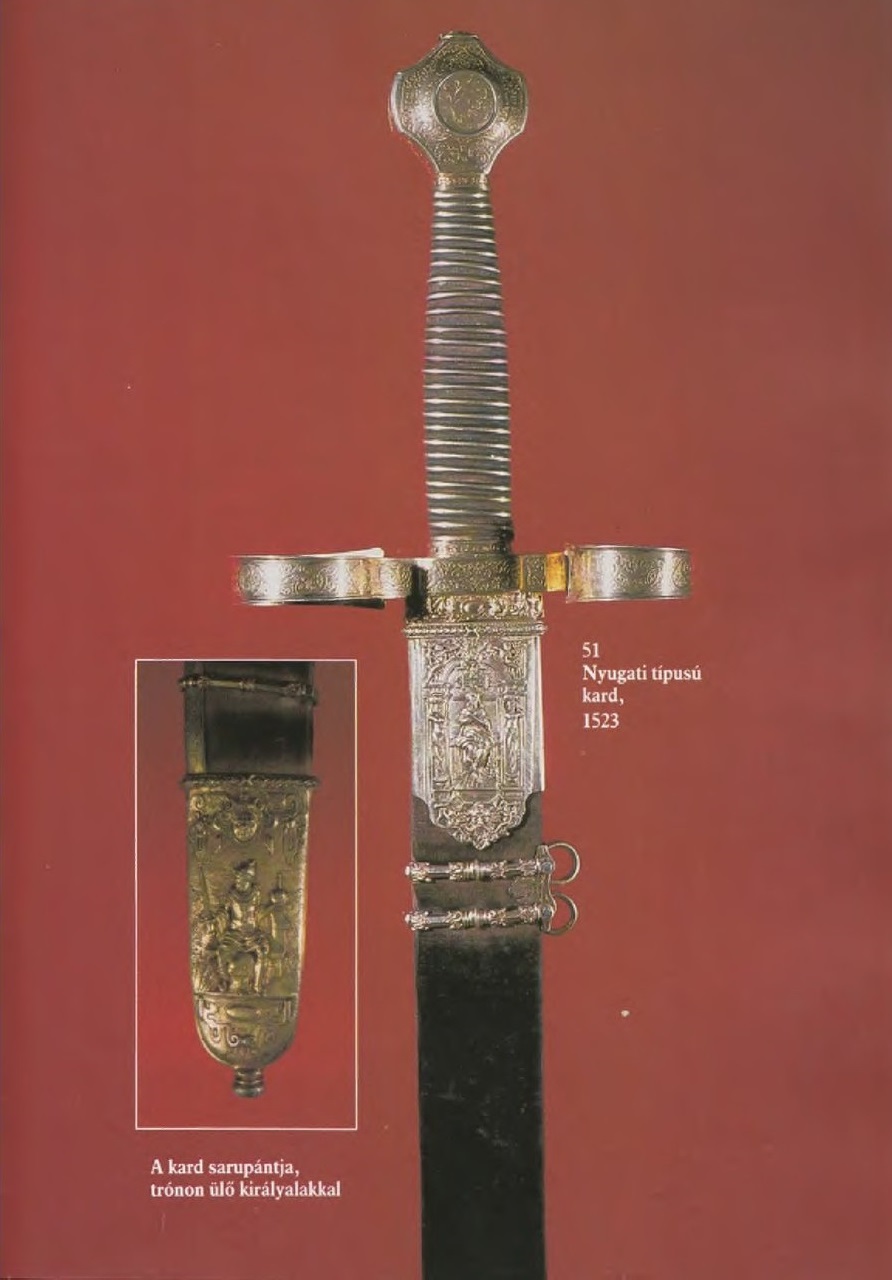Quote:
Originally Posted by Teisani

Excellent finds Mark!
Also notice the gold wire wrap, another common trait on these mid-to-late 16th century Hungarian (and sometimes Polish) sabres. Makes me wonder if the wire wrap on the first sword you posted is a later addition.
|
I think this is possible - here is another sword in the same museum, overall rather different, but the grip is so similar. According to descriptions, the date of 1523 is inscribed somewhere on the fittings. The quillons are another variant of the S-curve, very broad and ribbon-like, with a number of international parallels in the 16th century - a topic for later.

Quote:
Originally Posted by Teisani

|
I can't add anything specific, I don't see any references on that page... Will just say that this and Sebald Beham's woodcut show features that are very common in Germany around this time, long, straight or curved quillons with knobby terminals, various forms of "scentstopper" pommels, or disc pommels, and semi-circular, flap-like rainguards. I hadn't seen the woodcut before, so it's interesting to see what seems to be the multi-fullered blade... good to show and remember how these features are never exclusive to one region, no matter how they might seem stereotypically "Hungarian" or whatever.
Quote:
Originally Posted by Teisani

One thing that puzzles me is the lack of one-handed examples, other than those on Dobromir's frescos.
|
There are some, I will share another day. Mostly from further south, around Bosnia and Serbia. The sabers and large swords really do predominate within Hungary/Transylvania apparently.


